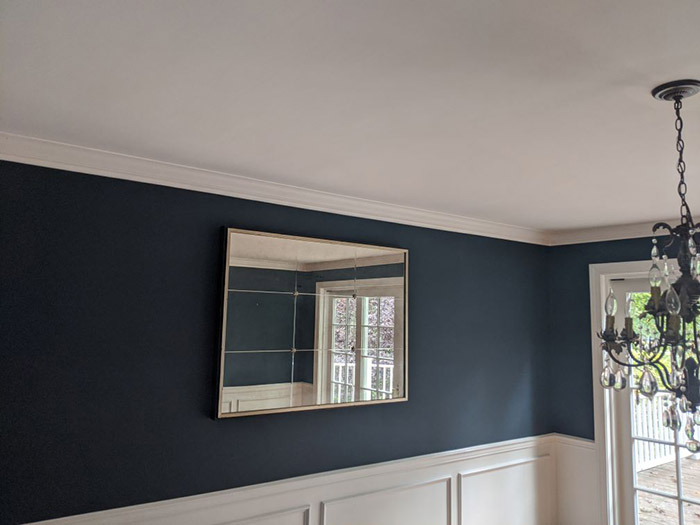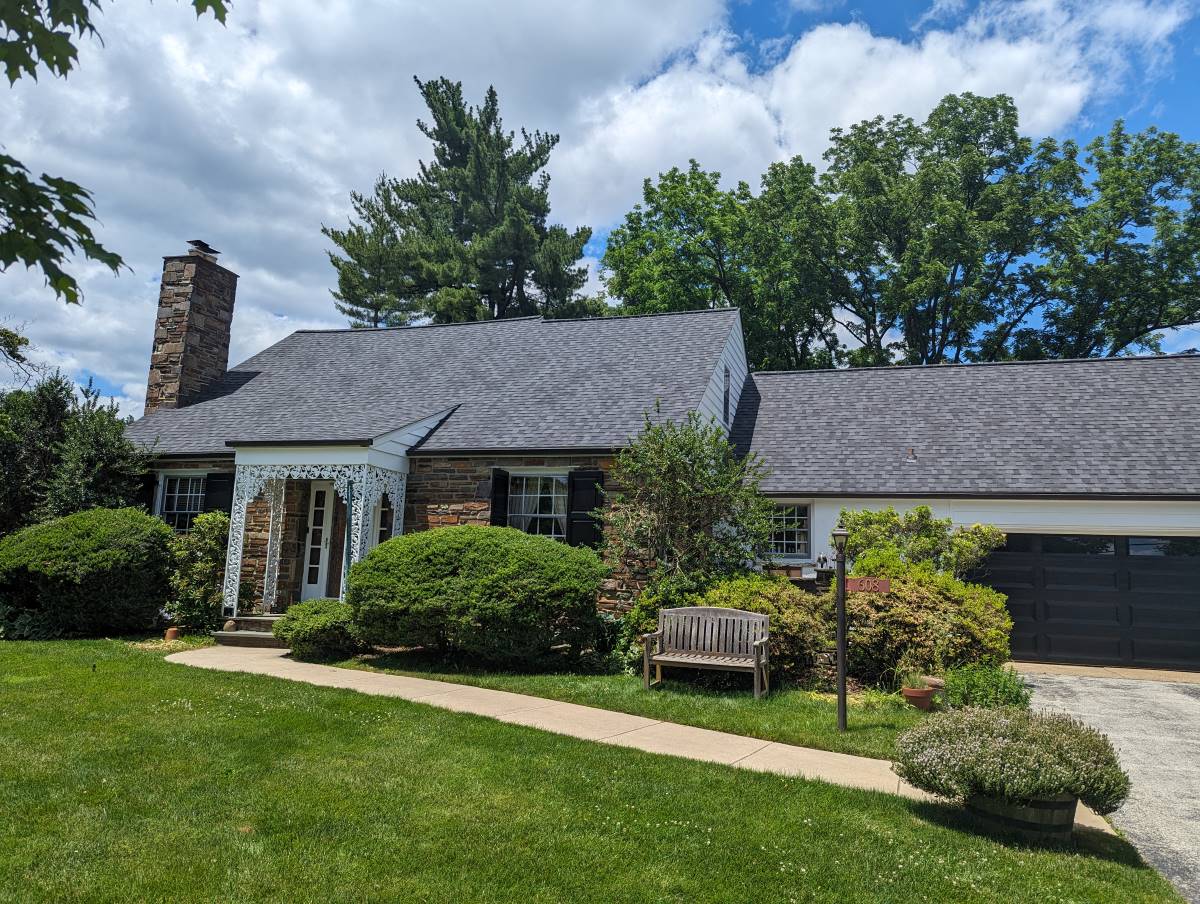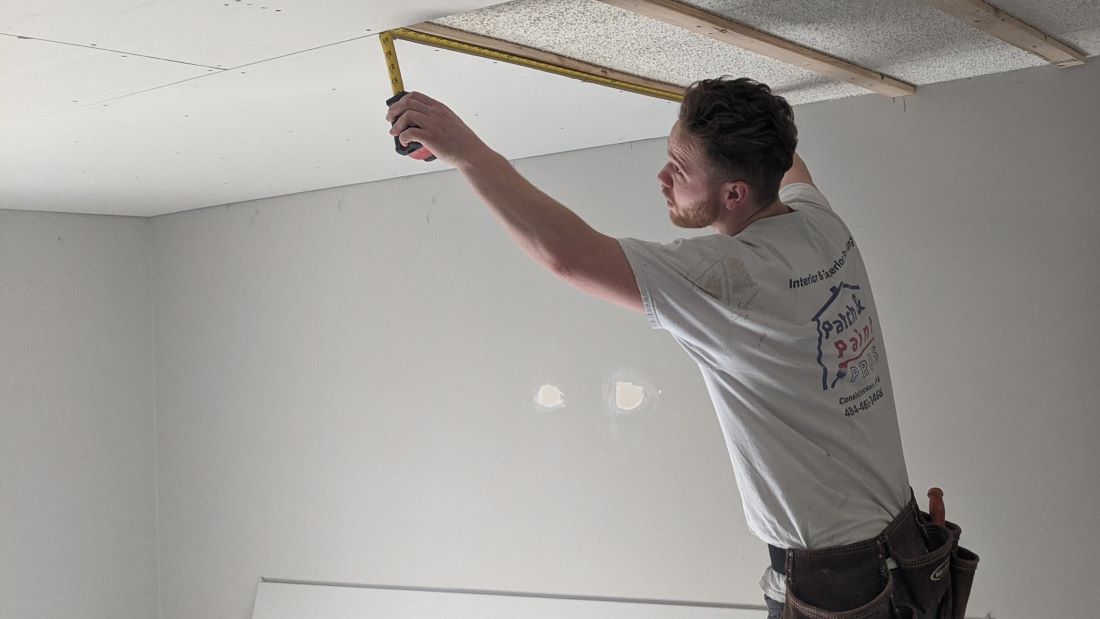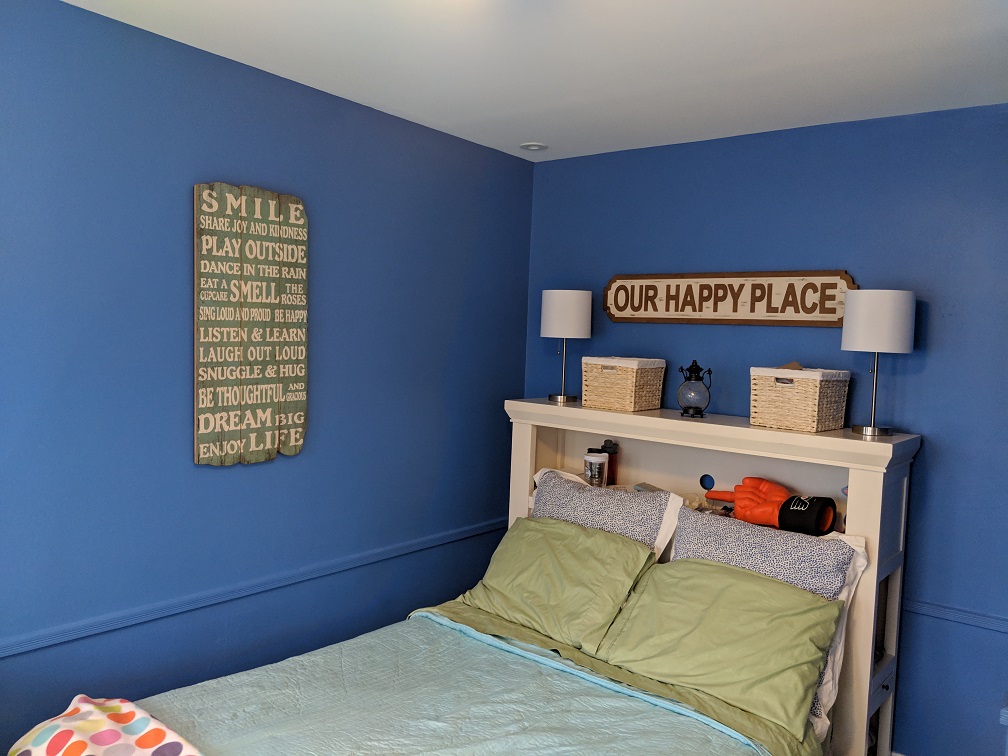Are you frustrated with the frequent occurrence of mold and mildew growth on your painted surfaces? It can be a daunting task to constantly clean and maintain these areas, especially when it seems like the problem keeps coming back. Fortunately, there are solutions that can help you address this issue and prevent it from happening again in the future.
In this article, we will share insights from professionals on how to effectively tackle mold and mildew growth on painted surfaces. From identifying the root cause of the problem to choosing the right cleaning solution, properly preparing the surface, applying preventative measures, and seeking professional help if necessary – we’ve got you covered. With our expert tips and guidance, you’ll be able to confidently handle any mold or mildew issues that arise in your home or workplace.
Identify the Root Cause of the Problem
You need to figure out what’s causing the mold and mildew growth before it ruins your beautifully painted surfaces. Don’t let it win – get to the root of the problem now! Conduct a root cause analysis by assessing the environmental factors that may be contributing to the growth.
Mold and mildew thrive in damp, humid environments, so check for any leaks or water damage in your home. Poor ventilation can also lead to excess moisture, which creates an ideal breeding ground for these fungi. Additionally, if you live in an area with high levels of humidity or rainfall, you may be more susceptible to mold and mildew growth. Identifying and addressing these underlying causes will help prevent future outbreaks on your painted surfaces.
Choose the Right Cleaning Solution
When it comes to choosing the right cleaning solution for mold and mildew on painted surfaces, there are a few key factors to consider. Firstly, understanding the types of cleaning solutions available is crucial. From bleach-based products to natural alternatives like vinegar, each option has its own set of pros and cons that you need to weigh up before making your decision. Secondly, certain factors such as the severity of the mold growth, surface type, and your personal preferences will also play a role in determining which cleaning solution is best suited for your needs.
Understanding the Types of Cleaning Solutions
To effectively remove mold and mildew on painted surfaces, it’s important to know the different types of cleaning solutions available. For eco-friendly options, you can use white vinegar or hydrogen peroxide mixed with water. Both are effective in killing mold and mildew while being gentle on the surface. Simply mix equal parts vinegar or hydrogen peroxide with water and apply it to the affected area using a spray bottle or cloth. Let it sit for 10-15 minutes before scrubbing the surface with a soft-bristled brush or sponge. Rinse thoroughly with water and dry completely.
If you prefer DIY cleaning methods, you can make your own cleaning solution by mixing baking soda and water until it forms a paste-like consistency. Apply the paste onto the affected area using a cloth or brush, then let it sit for 10-15 minutes before rinsing it off with water. Another DIY solution is mixing borax powder and water to create a paste that can be applied onto painted surfaces. Leave it on for about half an hour before rinsing thoroughly with water. Whatever cleaning solution you choose, always wear protective gear such as gloves, goggles, and a mask to avoid inhaling any harmful fumes or substances during the cleaning process.
Factors to Consider When Choosing a Cleaning Solution
Factors such as the type of surface, severity of mold and mildew, and environmental impact should be taken into consideration when selecting a cleaning solution. Effective ingredients, such as bleach or hydrogen peroxide, are commonly used by professionals to remove mold and mildew on painted surfaces. However, these solutions may not be suitable for all types of surfaces and can cause discoloration or damage to certain materials.
If you prefer DIY methods, there are several options available that use natural ingredients like vinegar or baking soda. These solutions may not be as effective as commercial cleaners but they are eco-friendly and cost-effective. When choosing a cleaning solution, it is important to weigh the pros and cons of each option in order to determine what will work best for your specific situation. By considering factors like effectiveness, environmental impact, and cost-effectiveness you can select a cleaning solution that will safely remove mold and mildew from your painted surfaces without causing any damage.
Properly Prepare the Surface
Firstly, you’ll need to thoroughly clean the painted surface before attempting to address any mold or mildew growth. Surface cleaning is crucial as it removes any dirt, debris, or other contaminants that may affect paint adhesion. Use a stiff-bristled brush and warm soapy water to scrub the surface gently. Rinse with clean water and allow it to dry completely.
After cleaning the surface, inspect it for any signs of damage such as cracks or peeling paint. Repair these damages before proceeding further. Once you have confirmed that the surface is clean and in good condition, you can then apply a mold and mildew remover solution following the manufacturer’s instructions. Make sure to wear protective gear such as gloves and goggles when applying the solution. By properly preparing the surface, you ensure that your efforts are not in vain and that your paint job will last longer without succumbing to mold or mildew growth.
Apply Preventative Measures
You can prevent mold and mildew growth on painted surfaces by using paint that is specifically designed to resist it. Look for products labeled as “mold and mildew resistant” or “antifungal.” Proper ventilation in the room can also help prevent moisture buildup and subsequent mold growth. In addition, controlling humidity levels through the use of dehumidifiers or air conditioning units can also help keep your painted surfaces free from mold and mildew.
Using Mold and Mildew Resistant Paint
If you want to prevent mold and mildew growth on painted surfaces, using mold and mildew resistant paint is a must. This type of paint contains special additives that inhibit the growth of these fungi. When selecting this type of paint, make sure to read the label carefully to ensure that it is specifically designed for use in high humidity areas such as bathrooms and kitchens.
To prevent the growth of mold and mildew on painted surfaces, it’s essential to pay attention to application techniques in addition to selecting the right paint. Follow the manufacturer’s guidelines, including recommended drying times between coats, to ensure proper application. Adequate ventilation during and after painting is also crucial as it helps minimize moisture buildup, which can contribute to mold and mildew formation. Lastly, maintaining the painted surfaces in the long term is essential. Regular cleaning using non-abrasive cleaners is recommended to remove dirt and grime that can serve as a food source for fungal growth. By following these steps, you can effectively reduce the risk of mold, mildew, and paint drips, ensuring a clean and durable painted surface.
Proper Ventilation and Humidity Control
Maintaining proper ventilation and controlling humidity levels in your home is crucial for preventing the growth of mold and mildew on painted surfaces. This is because mold and mildew thrive in warm, humid environments with poor air circulation. Here are some tips to help you manage moisture and prevent mold growth:
- Use exhaust fans: Make sure your bathrooms, kitchen, and laundry room have exhaust fans that vent outside. This will help remove moisture from the air and prevent it from settling on surfaces.
- Open windows: Whenever possible, open windows to allow fresh air to circulate throughout your home. This will also help reduce humidity levels.
- Monitor indoor humidity: Invest in a hygrometer to keep track of indoor humidity levels. Ideally, you want to keep it below 60%. If it’s consistently higher than that, consider using a dehumidifier.
By following these simple steps, you can ensure proper air circulation and manage moisture levels in your home. This will not only prevent mold growth on painted surfaces but also improve overall indoor air quality. Remember that prevention is key when it comes to mold and mildew – by staying vigilant and taking proactive measures, you can avoid costly damage down the road.
Seek Professional Help if Necessary
Don’t hesitate to call in the experts if mold and mildew growth on your painted surfaces seems beyond your control. Professional services are available for situations like these, and it’s always better to let them handle the problem rather than risking further damage through DIY methods. These professionals have the expertise, equipment, and materials needed to effectively remove mold and mildew while ensuring that your painted surface remains intact.
When choosing a professional service, make sure to do some research first. Look for companies that specialize in mold remediation and have a good track record of success. It’s also important to check if they have the necessary licenses and certifications required by local authorities. By entrusting the job to a reliable professional, you can rest assured that your home or property is safe from harmful mold and mildew growths.
Final Thoughts
So there you have it – some expert tips on how to address mold and mildew growth on painted surfaces. By identifying the root cause of the problem, choosing the right cleaning solution, properly preparing the surface, and applying preventative measures, you can effectively prevent mold and mildew from returning.
However, if you find that your efforts aren’t enough or the issue is too severe, don’t hesitate to seek professional help. Mold and mildew can be hazardous to your health and damaging to your property, so it’s important to take action as soon as possible. With these insights from the pros, you’ll be well-equipped to tackle any mold or mildew issues that come your way!












